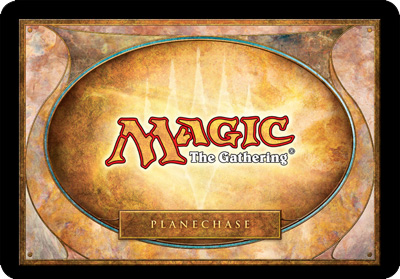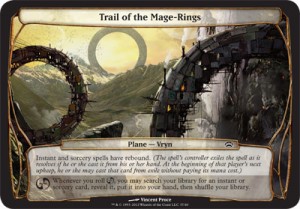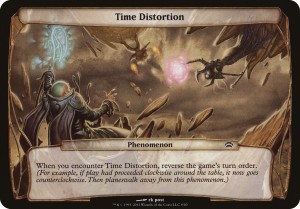What is planechase?
Planechase is a variant of magic, often played in multiplayer, using large Planechase cards that represent an area of a world in the multiverse of Magic: the Gathering.

There were two releases of the sets, in 2009 and 2012, and the official guide to playing Planechase is done according to this article.
However, this isn’t the only way to play Planechase, as many players play it with one single deck, or a planar map, or in conjunction with other casual formats!
General Play Rules:
Planechase is meant to be played multiplayer, whether you’re going with pre-constructed decks or your own builds! Play proceeds around the table, with each player using the plane currently on the top of the stack on their turn for them, if it affects them. As players choose to roll the planechase die or attack, the format should be fun and engaging for all, depending on what plane is currently active.
Specific Planechase card rules:
-During the game, one (or sometimes more) plane card (or phenomenon) will be face up, in the command zone. The command zone is the same zone used for Commanders, Emblems, and other over sized game cards. As long as a plane card is face up in the command zone, its abilities affect the game.
 -Plane cards are not permanents. Nothing really can affect them. (they’re in the command zone!)
-Plane cards are not permanents. Nothing really can affect them. (they’re in the command zone!)
-“A plane card’s controller is the player whose turn it is (although this can change when a player leaves the game; see Leaving the Game, below). When a plane card’s abilities talk about “you,” they’re always talking about the plane’s current controller. If the plane’s abilities have targets, its current controller chooses them.”
-“During your turn, any time you could cast a sorcery, you may roll the planar die. You can do this multiple times in the same turn. To roll the die, you must pay an amount of mana equal to the number of times you’ve already rolled the die this turn. So the first roll is free, the second roll costs 1 mana, the third roll costs 2 mana, and so on. Rolling the die happens immediately (no one can respond to it), but any ability that triggers as a result goes on the stack, and can be responded to like other triggered abilities.”

-If you roll the 1st side, with the planeswalker symbol, the current plane is placed on the bottom of the planar stack, and the next plane is revealed. This ability uses the stack, so players can respond before leaving the plane. If you roll the 2nd symbol, the chaos symbol, you get the chaos ability on the current plane.
“Why might you want to re-roll the die? Rolling the die could have three results:
- If you roll a blank face, nothing happens.
- If you roll the chaos symbol, the face-up plane card’s chaos ability triggers. Players may cast instants and activate abilities before it resolves.
- If you roll the planeswalker symbol, the face-up plane card’s unwritten planeswalking ability triggers. Players may cast instants and activate abilities before it resolves. When the planeswalking ability resolves, the owner of the face-up plane card puts it on the bottom of his or her planar deck, then you turn the top card of your planar deck face up (sometimes this is the same deck). Welcome to a new world!”
From the 2012 announcement on Phenomenon:
“Encountering a Phenomenon:
Each phenomenon card has a triggered ability that triggers when you “encounter” it, meaning when you move that card off the planar deck and turn it face up. When such an ability triggers, it’s put on the stack, then players may respond by casting spells and activating abilities.
To resolve the triggered ability of a phenomenon card, the player who encountered that phenomenon performs its instructions and then planeswalks. To planeswalk, the player puts the face-up phenomenon card on the bottom of its owner’s planar deck face down, then moves the top card of his or her planar deck off that planar deck and turns it face up. Planeswalking after encountering a phenomenon works the same way as planeswalking by rolling the planar die.

If a face-up phenomenon card’s “When you encounter” ability is neither on the stack nor waiting to be put on the stack (because it’s been countered or otherwise left the stack without resolving), the planar controller planeswalks. This is a state-based action.
Phenomenon cards have no mana cost. They can’t be cast as spells. They’re all colorless.”
Additional Rules to remember:
-Your planar deck must have at least ten cards in it.
-No two cards in your planar deck can have the same name.
Other documents:
Planechase 2012 release article

